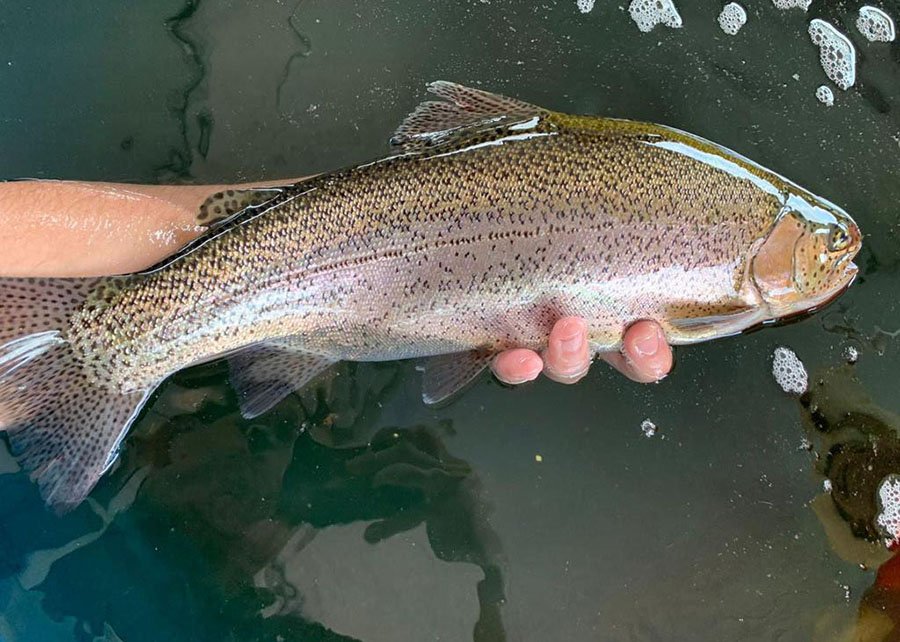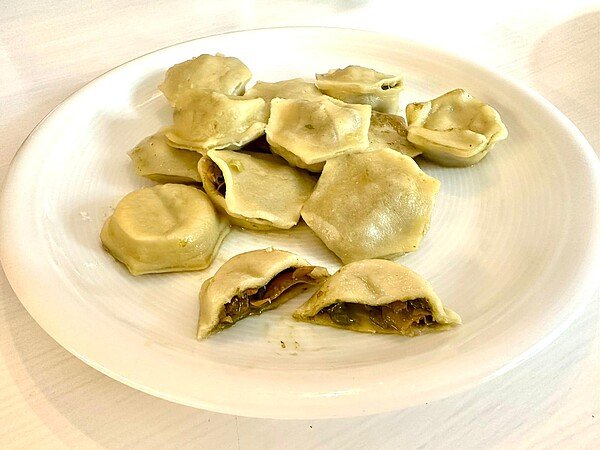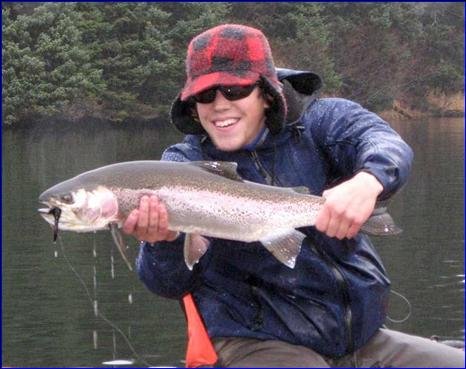
Fishmeal, the traditional protein source in aquaculture feeds, is becoming increasingly scarce and expensive, prompting researchers to explore alternative ingredients.
A recent study conducted in Iran by researchers from the University of Hohenheim and the Thünen Institute of Fisheries Ecology has made significant strides in developing fishmeal-free diets for rainbow trout (Oncorhynchus mykiss), offering a promising solution for the burgeoning aquaculture sector.
The Need for Alternative Ingredients in Aquaculture Feeds
Fishmeal has long been the gold standard for protein in aquaculture feeds due to its high digestibility and balanced amino acid profile. However, its limited availability and rising costs have created a pressing need for alternative protein sources.
In Iran, the situation is further complicated by import restrictions and the high price of the global fishmeal market. To ensure the sustainability of the aquaculture industry, researchers are turning to locally available ingredients that can replace fishmeal without compromising fish health or growth.
The Study: Evaluating Fishmeal-Free Diets
The researchers implemented a two-phase study to evaluate the effectiveness of fishmeal-free diets for rainbow trout.
The first phase focused on assessing the growth performance and nutrient digestibility of six experimental diets. These diets included poultry protein concentrate, blood meal, low-ash poultry by-product meal, canola meal (ranging from 20% to 40%), and feather meal (Goldmehl®). A control diet containing fishmeal was used for comparison. Juvenile rainbow trout, with an average initial weight of 5.3 grams, were fed these diets for 56 days. Feces were collected to assess nutrient digestibility and phosphorus availability.
The second phase involved extruding the most cost-effective diet from the first phase and feeding it to fry (14.6 grams) and grow-out fish (172.5 grams). This phase aimed to simulate real-world aquaculture conditions and validate the findings of the initial trial. Growth performance, nutrient utilization, and effluent quality were measured for 28 and 55 days, respectively.
Key Findings
The study evaluated fishmeal-free diets for rainbow trout, using locally available ingredients in Iran, and was divided into two phases.
Stay Always Informed
Join our communities to instantly receive the most important news, reports, and analysis from the aquaculture industry.
Phase 1
The researchers evaluated the growth performance and digestibility of six pelleted diets in juvenile rainbow trout. The test diets contained poultry protein concentrate, blood meal, low-ash poultry by-product meal, canola meal (20-40%), and feather meal. The main results were:
- Trout fed with 35% canola meal in pelleted form showed results comparable to the control group in terms of growth performance and apparent digestibility of lipids (>91%), crude protein (>87%), and organic matter (>78%).
- There were no significant differences in final weight or weight gain between fish fed different levels of canola meal, except for the diet with 30% canola meal.
Phase 2
The 35% canola meal diet, which resulted in the most cost-effective feed conversion ratio (FCR) in phase 1, was extruded and used to feed fry and grow-out fish. The main results were:
- In fry, in vivo digestibility was evaluated. Simultaneously, grow-out fish were fed to measure growth performance, nutrient utilization, and nutritional effluents.
- Growth performance was similar between the extruded diet with 35% canola meal and the control diet in the grow-out fish group.
- Dry feed intake was lower in the fish group that consumed the extruded diet with 35% canola meal compared to the control group.
Implications for the Aquaculture Feed Industry
The study has several important implications for the trout feed production industry, particularly with regard to sustainability and cost reduction:
- Alternatives to Fishmeal: The study demonstrates that it is possible to formulate diets for rainbow trout that do not rely on fishmeal, using terrestrial protein sources such as poultry protein concentrate, blood meal, low-ash poultry by-product meal, and feather meal, along with canola meal. This is crucial given that fishmeal availability is limited and its demand is increasing. The industry can reduce its dependence on this resource and explore more sustainable alternatives.
- Use of Canola Meal: The research indicates that canola meal can be included in rainbow trout diets up to 40% without significant negative effects on growth performance or digestibility. This is significant, as canola meal is a locally available ingredient in many places, including Iran, where the study was conducted. The use of local ingredients reduces import costs and supports regional economies.
- Cost-Effective Diets: By using ingredients like canola meal and poultry by-products, the industry can formulate more cost-effective diets without compromising the nutritional quality or growth performance of trout. The 35% canola meal diet in the study proved to be the most cost-effective in terms of feed conversion ratio (FCR).
- Environmental Sustainability: Diets formulated without fishmeal and with terrestrial ingredients may be more environmentally friendly, as they reduce pressure on fish stocks. Additionally, by optimizing digestibility and nutrient retention, the amount of nutritional effluents released into the environment is reduced.
- Phosphorus Considerations: The study highlights the importance of considering phosphorus availability when formulating fishmeal-free diets. While canola meal can replace fishmeal, phosphorus availability may be lower, so it is crucial to adjust formulations to ensure an adequate supply of this nutrient for trout growth and health. The industry must take into account the phosphorus availability of the feed components to optimize the diet and minimize phosphorus discharge into the environment.
- Food Processing: The study also considers different food processing methods, such as pelleting and extrusion. The extrusion of the diet containing 35% canola meal showed similar results to the control group in terms of growth, although with some differences in protein digestibility and phosphorus availability. The industry can use this information to optimize food production processes and improve their nutritional value.
- Adaptation to Different Growth Stages: The study notes that the nutritional requirements of trout vary according to their growth stage. The feed production industry must consider these changes to formulate diets that maximize performance and minimize effluents. This involves adjusting formulas for juvenile and grow-out fish for optimal nutrient utilization and a lower load of pollutants in the environment.
Conclusion
The study showed that rainbow trout can achieve satisfactory growth with fishmeal-free diets that include poultry protein sources and canola meal, with a maximum inclusion rate of 40% canola meal.
It also highlights the importance of considering phosphorus availability when formulating diets for the growth stage, especially when using vegetable protein sources.
Finally, the study suggests that canola meal can be a viable and sustainable alternative to fishmeal in rainbow trout feed, with comparable results in growth and digestibility, provided that phosphorus availability is considered.
Contact
Hamed Salehi
University of Hohenheim, Institute of Agricultural Sciences in the Tropics
Stuttgart, Germany
Thünen Institute of Fisheries Ecology
Bremerhaven, Germany
Email: hamedsalehi1983@gmail.com
Reference (open access)
Salehi, H., Reiser, S. & Focken, U. Assessment of the nutritional and effluent properties of potential fish-meal-free diets for rainbow trout (Oncorhynchus mykiss W.) in Iran. Aquacult Int 33, 165 (2025). https://doi.org/10.1007/s10499-025-01841-z
Editor at the digital magazine AquaHoy. He holds a degree in Aquaculture Biology from the National University of Santa (UNS) and a Master’s degree in Science and Innovation Management from the Polytechnic University of Valencia, with postgraduate diplomas in Business Innovation and Innovation Management. He possesses extensive experience in the aquaculture and fisheries sector, having led the Fisheries Innovation Unit of the National Program for Innovation in Fisheries and Aquaculture (PNIPA). He has served as a senior consultant in technology watch, an innovation project formulator and advisor, and a lecturer at UNS. He is a member of the Peruvian College of Biologists and was recognized by the World Aquaculture Society (WAS) in 2016 for his contribution to aquaculture.




